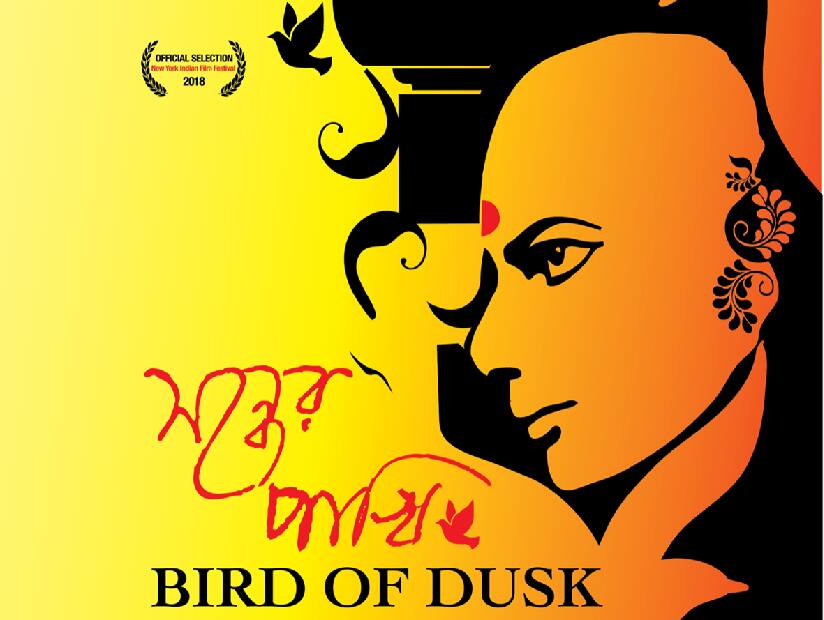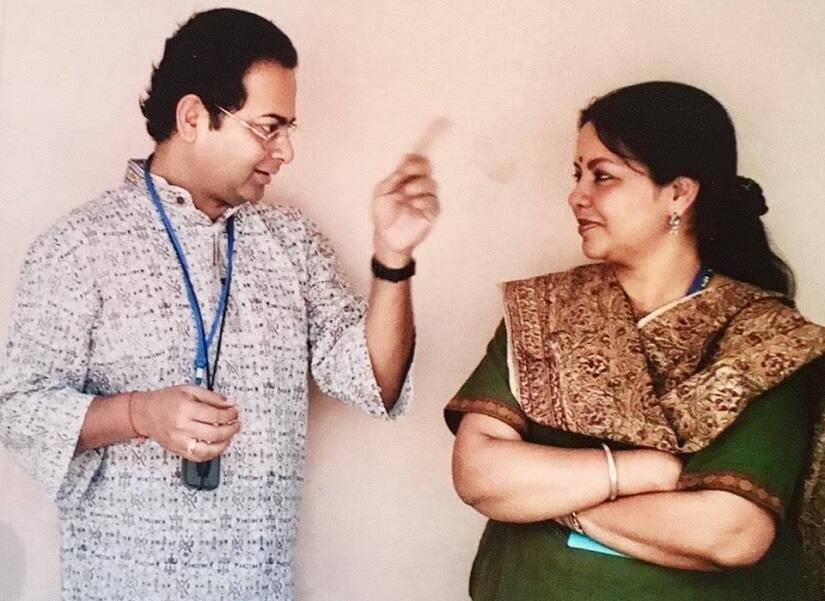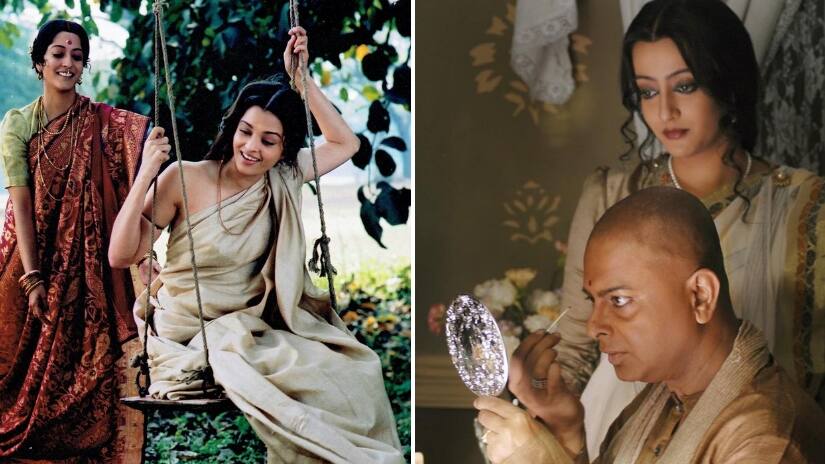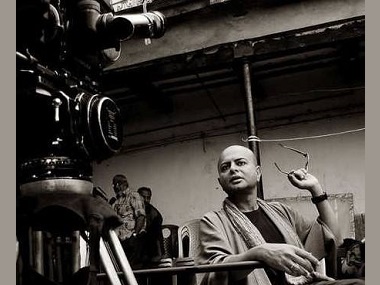For an artist, it is often their work that remains testimony to their artistic excellence, going on to become their legacy. However, there are few who manage to surface above and beyond the realms of their art. Late filmmaker Rituparno Ghosh is a prime example of this. While his films — from his claim-to-fame Unishe April to his swansong Chitrangada — have earned rave reviews and cult status, his personal life was a major point of speculation. It is hard to say how much of that person the world knew of. Ghosh was born and raised in Kolkata and most of his work revolved around the culture and literature of the city. The story and stories of Ghosh are interrelated to the changing cityscape and society of Kolkata. Sangeeta Datta’s documentary on Ghosh, Bird of Dusk, attempts to bring to light some known and unknown chapters of Ghosh’s life. The documentary derives its source from the director’s own interviews and conversations, and his memoir titled __‘First Person’. [caption id=“attachment_5477851” align=“alignnone” width=“824”]  Sangeeta Datta’s Bird of Dusk. Facebook[/caption] This documentary, shot over the course of a year, also features conversations with people that Ghosh had collaborated with in different capacities over the years. Actors like Soumitra Chatterjee, Sharmila Tagore, Aparna Sen, Prosenjit Chatterjee, Konkona Sensharma, Ghosh’s core crew cinematographer Aveek Mukhopadhyay, editor Arghyakamal Mitra and music composer Debajyoti Mishra can be seen discussing his craft. Bird of Dusk premiered at the Jio MAMI 20th Film Festival on 28 October and Firstpost got a chance to interact with the director Sangeeta Datta. Excerpts from an interview: How did it strike you to make a documentary on Rituparno Ghosh? Rituparno Ghosh was a very dear and old friend from our days at Jadavpur University. We also had a long collaborative period when I worked as Associate Director on Chokher Bali, Raincoat, Antarmahal, The Last Lear and later on the documentary on Tagore, Jeeban Smriti. I edited a book on Rituparno (published by Routledge) and almost immediately started work on the documentary. I felt it was urgent to make the film now to assess the prolific filmography and to get a sense of one of the most artistic and intellectual filmmakers of our time. Ritu and I would have long discussions not only on cinema but on art, history, literature and our mutual love for Tagore. The title, Bird of Dusk, is a reference to a very well known painting by Abanindranath Tagore (founder of the Bengal School of Art) but beyond that, it is a reference to the creative process in an artist’s mind. It also evokes the image of a lonely bird flying home at dusk. I think my film offers this interpretation. How challenging was it to put all of it together — from behind-the-scenes footage, shooting (in) the city, interviewing celebrities and getting archival footage? It took us more than a year to complete the film with a young crew and very little funds. No one wanted to finance a documentary. But people were generous with their time and resources. Pulling out archival material was difficult, since his early films were shot on film so a lot of footage had to be digitised. Some films with legal liabilities could not be touched. So we went on a journey of the city, discovering Kolkata through the lens of young cinematographer, through the changing seasons and the festivals, through the flowing river which then worked as a beautiful metaphor for Ritu’s bold arguments about gender fluidity, indeed about the very cycle of life. The film is inherently about the artist and his intimate relation with his city, his surroundings, his culture. [caption id=“attachment_5477941” align=“alignnone” width=“825”]  Rituparno Ghosh and Sangeeta Datta. Facebook[/caption] What was your experience working with Ghosh as an associate for nearly six projects? He was being hailed as the inheritor of Ray’s legacy from his early work. And templates like Utsab were modelled on Ray’s Shakha Prosakha. He was also influenced by Bergman. Then came the big leap with Bombay stars, bigger finance, pan-Indian fame. But after this, he wanted to break away from linear narrative and focus more on the cinematic style or craft. He was a compulsive storyteller and did excellent prep. Everything would be ready beforehand so he could concentrate entirely on his actors on the set. His set designs have become archetypes for Bengali cinema and television. Ghosh was instrumental in bringing the attention of cinephiles across the globe towards Bengali cinema. As a close friend of his, could you tell us whether Ghosh understood this mammoth responsibility and whether he consciously worked towards it? Ghosh was spot-on with his publicity and marketing, and casting stars had a lot to do with that. So his earlier films had serious issues like marital rape, incest, infidelity but he had stars to lure his audience to the big screen. He has acknowledged Ray’s influence in his work many times especially with Chokher Bali. The influence of Aparna Sen’s Paroma (on him) is also widely acknowledged. People came back to single screen theatres to watch his films, which were aesthetic and hard-hitting but were well-told stories. [caption id=“attachment_5477961” align=“alignnone” width=“825”]  Raima Sen and Aishwarya Rai in Chokher Bali (left); Rituparno Ghosh giving a brief to Raima Sen before a shot in Nouka Dubi (right).[/caption] How difficult is it for an artist to keep his personal life away from their art? What was Ghosh’s modus operandi? While he enjoyed stardom, he could also just shut the door on the world and write. He enjoyed the manner in which the media fed on his dramatic change in appearance, and found it humorous. He also loved-role playing and whetting more curiosity. He could be fun loving and naughty. But his huge intellectual stature and the power of his writing held his artistic integrity. What is your ultimate purpose with this documentary? Is it meant to present the filmmaker in a new light or make him more relevant? It is an honest and personal look at a very unique individual, who became a cultural icon and who had a deep-seated influence on present-day thinking. With the landmark ruling down of 377, we move to a more inclusive and fair society, and Ghosh was a pioneer in this battle. The film has travelled extensively across North America and the UK, and I have found younger audiences inspired by his legacy.
Bird of Dusk premiered at the Jio MAMI 20th Film Festival and Firstpost got a chance to interact with the director Sangeeta Datta.
Advertisement
End of Article


)
)
)
)
)
)
)
)
)



